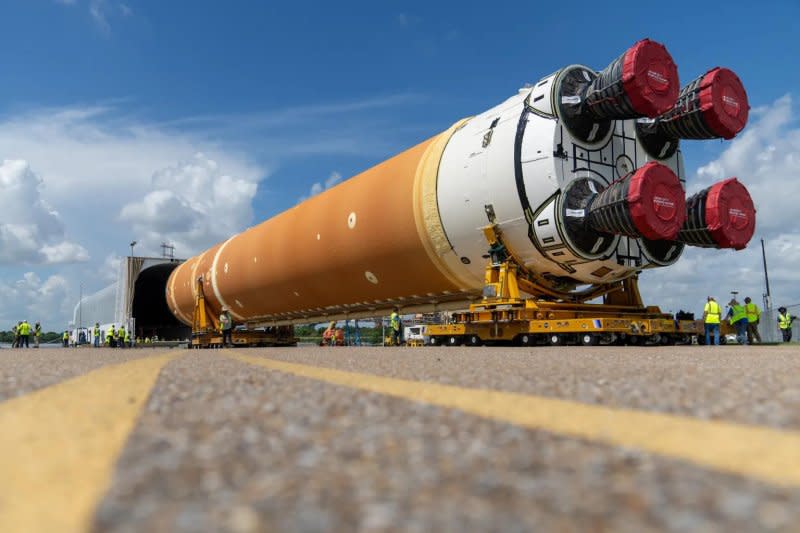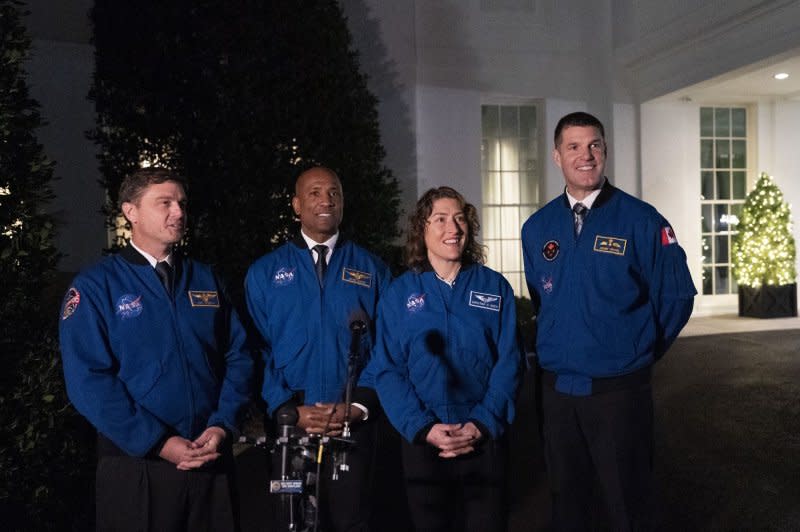NASA ships critical rocket stage to Florida for Artemis II mission to moon

- Oops!Something went wrong.Please try again later.
- Oops!Something went wrong.Please try again later.
- Oops!Something went wrong.Please try again later.
July 17 (UPI) -- NASA on Tuesday rolled out from Louisiana a crucial rocket stage on the way to Florida as part of NASA's Artemis II mission to send humans on the moon again.
The 212-foot long Space Launch System rocket's core stage was released from NASA's Michoud Assembly Facility in New Orleans in order to travel by barge about 900 miles to Florida's Kennedy Space Center, where NASA recently announced plans to name a building after legendary human computer Dorothy Vaughan and other women involved in the historical Apollo space program ahead of the 55th anniversary of the Apollo 11 moon landing.
Its delivery for the Artemis II mission now "signals a shift from manufacturing to launch readiness as teams continue to make progress on hardware for all major elements for future SLS rockets," John Honeycutt, SLS program manager at NASA's Marshall Space Flight Center in Huntsville, Ala., said Tuesday in a news release.
The SLS rocket's core stage, of which Boeing was the project's lead contractor, is the largest NASA has ever produced, according to the federal space agency. It reportedly was loaded on giant platforms and slowly pulled down Venus Street to a Mississippi River gulf canal loading area, where it was put on NASA's Pegasus barge for the trip to Florida.
It will provide more than 2 million pounds of fuel thrust for the Orion spacecraft as part of the planned Artemis II crewed mission, which has the goal to fly four astronauts back to the moon by the end of next year with the aim to ultimately build a human presence on the lunar satellite in a first return since 1972's Apollo mission.

The rocket has five major parts to it, the space agency says, such as "two huge" tanks to hold more than 733,000 galls of super-chilled liquid propellant to feed its four RS-25 engines, of which NASA in March completed the ninth of 12 scheduled tests at NASA's Stennis Space Center near Bay St. Louis in Mississippi.
Four NASA astronauts -- Reid Wiseman, Victor Glover, Christina Koch and Canadian astronaut Jeremy Hansen -- are widely expected to orbit the moon on next year's planned Artemis mission. It will mark the first time that a woman, a person of color and an international partner set off for the moon on a mission to reach the planet.
NASA earlier this month named Andre Douglas as a backup crewmember for its Artemis II test flight while the Canadian Space Agency in November named Jenni Gibbons as its backup astronaut for the mission.
Meanwhile, the space launch system accounts for about $2.5 billion of the roughly $7.5 billion budgeted annually for the United States' deep space exploration program, according to NASA.
An official says this SLS rocket is a "key component" in the effort to develop a long-term presence on the moon.
With Artemis, NASA has "set our sights on doing something big and incredibly complex that will inspire a new generation, advance our scientific endeavors, and move U.S. competitiveness forward," Catherine Koerner, NASA's associate administrator for Exploration Systems Development Mission Directorate in Washington, said Tuesday.

